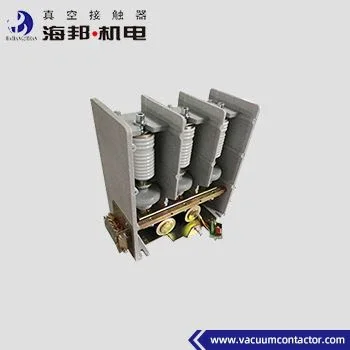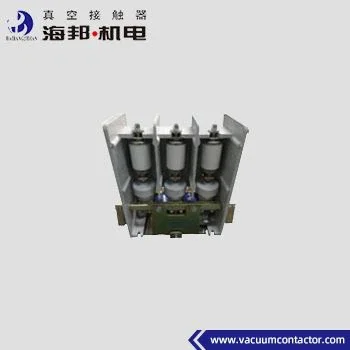- This topic is empty.
-
AuthorPosts
-
05/07/2024 at 18:38 #151987
In the intricate web of electrical systems, particularly in industrial and commercial applications, the role of contactors is pivotal. A 3.6kV vacuum contactor rated at 630A is a specific type of contactor designed to handle high voltage and current loads efficiently. This blog post will explore the role, advantages, and applications of 3.6kV vacuum contactor 630A in electrical systems.
What is a 3.6kV Vacuum Contactor 630A?
A vacuum contactor is an electrical switch that uses a vacuum-sealed chamber to interrupt the current flow in a circuit. The 3.6kV rating indicates the contactor's ability to handle voltages up to 3600 volts, while the 630A rating refers to its capacity to handle currents up to 630 amperes.
Key Features
Vacuum Interrupter: The vacuum-sealed chamber provides an arc-quenching medium, which extinguishes the electrical arc when the contacts open.
High Voltage and Current Handling: Capable of managing high voltage and current loads, making it suitable for heavy-duty applications.
Reliability: Known for its reliability and long service life due to the absence of contacts erosion in the vacuum environment.

Applications of 3.6kV Vacuum Contactor 630A
Industrial Automation
In industrial settings, 3.6kV vacuum contactors are used to control the starting, stopping, and reversing of large motors and other high-power equipment.
Power Distribution Systems
These contactors are integral in power distribution systems for switching on and off high-voltage loads, such as transformers and generators.
Mining and Heavy Machinery
In mining and heavy machinery operations, the robustness and high current handling capacity of 3.6kV vacuum contactors are essential for managing the power requirements of large machinery.
Renewable Energy Systems
In renewable energy systems, such as wind turbines and solar power installations, vacuum contactors are used to manage the connection and disconnection of power to the grid.
Advantages of 3.6kV Vacuum Contactor 630A
Arc Suppression
The vacuum environment within the contactor provides excellent arc suppression, reducing wear and tear on the contacts and prolonging the life of the contactor.
Low Maintenance
Due to the absence of contact erosion and the sealed nature of the vacuum chamber, vacuum contactors require minimal maintenance.
High Efficiency
The high efficiency of vacuum contactors comes from their ability to handle high currents with minimal energy loss.
Safety
The vacuum chamber provides an additional layer of safety by preventing the possibility of electrical arc flash, which is a common hazard in electrical systems.
Environmentally Friendly
Vacuum contactors do not contain sulfur hexafluoride (SF6), which is used in some other types of high-voltage circuit breakers and is known to be a potent greenhouse gas.

Technical Considerations
Contactor Selection
When selecting a 3.6kV vacuum contactor, it's important to consider the specific requirements of the application, including the voltage, current, and duty cycle.
Integration with Control Systems
Vacuum contactors must be integrated with control systems to ensure proper operation. This includes the use of appropriate control relays and protective devices.
Coordination with Protective Devices
The contactor should be coordinated with other protective devices in the electrical system, such as fuses and circuit breakers, to ensure safe operation.
Environmental Conditions
The environmental conditions, such as temperature and humidity, can affect the performance of the contactor. It's important to select a contactor that can operate within the expected environmental range.
Compliance with Standards
Vacuum contactors must comply with international and local electrical standards to ensure safety and reliability.
Challenges and Innovations
Size and Weight
High-voltage contactors can be bulky and heavy, which can be a challenge in space-constrained applications. Innovations in design are addressing this by making contactors more compact.
Cost
The initial cost of vacuum contactors can be higher than other types of contactors. However, the long-term savings due to reduced maintenance and increased reliability can offset this cost.
Technological Advancements
Technological advancements are continually improving the performance and capabilities of vacuum contactors, including the development of smart contactors with integrated monitoring and diagnostic features.

Conclusion
The 3.6kV vacuum contactor 630A plays a critical role in electrical systems, providing a reliable and efficient means of controlling high-voltage and high-current loads. Its advantages in terms of safety, efficiency, and low maintenance make it an ideal choice for various applications in industrial automation, power distribution, and renewable energy systems. As technology continues to evolve, the role of vacuum contactors in electrical systems is expected to expand, with ongoing innovations addressing current challenges and further enhancing their performance.
Exploring the Advantages of Using a 3.6kV Vacuum Contactor 630A in High Voltage Systems
http://www.acvacuumcontactor.com
Wuxi haibang Mechanical and Electrical Manufacturing Co., Ltd. -
AuthorPosts
- You must be logged in to reply to this topic.